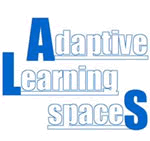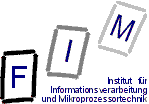Adaptive Systems
Contact person: Alexandros
Paramythis
Our current work on adaptive systems falls into the following
main categories:
You may also want to have a look at our ongoing projects
in this area.
Areas of work
Adaptive support for (collaborative)
eLearning
There is a recently completed EU-funded project in this area (Adaptive Learning
Spaces -- see below for more information), as well
as an ongoing FWF-funded project that started on January 1st 2008 (Adaptive Support
for Collaborative eLearning -- details also below).
Meta-adaptation and self-regulation
Self-regulation is a form of meta-adaptivity and, in simplified terms,
it refers to an adaptive system's capacity to improve its adaptive behaviour
through learning. For a relatively complete introduction to the field,
you may want to refer to this paper:
- Paramythis, A. (2004). Towards
Self-Regulating Adaptive Systems. In Weibelzahl, S., & Henze,
N. (Eds.), Proceedings of the Annual Workshop of the SIG Adaptivity
and User Modeling in Interactive Systems of the German Informatics
Society (ABIS04), Berlin, October 4-5 (pp. 57-63).
For an example of ways in which meta-adaptivity, and self-regulation
in particular, can affect our current approaches to designing and implementing
adaptive systems, you can have a look at the papers below accepted for
publication in AH2006. Actually, the first of the two papers, accepted
for presentation in the main track of the conference, is a short version
of the second, accepted for publication in the joint A3H and A3EH workshop.
- Paramythis, A. (2006). Can
adaptive systems participate in their design? Meta-adaptivity and
the evolution of adaptive behaviour. Proceedings of the Fourth
Adaptive Hypermedia and Adaptive Web-Based Systems 2006 Conference
(AH 2006), June 21-23, 2006, Dublin, Ireland. (5 pages, page numbers
not availabel yet) (short version)
- Paramythis, A. (2006). Self-regulated
adaptivity as a design and authoring support tool. Proceedings
of the joint 1st International Workshop on Authoring of Adaptive and
Adaptable Hypermedia (A3H) and the 4th International Workshop on Authoring
of Adaptive & Adaptable Educational Hypermedia (A3EH), held in
conjunction with the Fourth Adaptive Hypermedia and Adaptive Web-Based
Systems 2006 Conference (AH 2006), June 21-23, 2006, Dublin, Ireland.
(12 pages, page numbers not availabel yet) (long version)
Work in this area is moving along two axes: (a) development of the
formal theoretical basis for self-regulation, and (b) implementation
and integration of self-regulatory bahaviour in an adaptattion "engine".
Development of a generic hypermedia adaptation
engine
We are working on a hypermedia adaptation that is intended to be applicable
to any web-based system that has an XML "pipeline", or has
an XML-based representation of the document (fragments) to be returned
to the user, at any stage of the request-response cycle. The engine
supports adaptation "performatives", which can be thought
of as adaptation "verbs" that encapsulate adaptation techniques
at different levels of granularity, or manipulate the system's adaptation
models.
The engine defines programmatic interfaces (based on pre-defined, yet
flexible information flows) through which different modelling and decision-making
components can be plugged in. Standard implementations of these components
will be made available, including: (a) a simple user modelling component,
supporting overlay modelling (with respect to the application's domain
model(s)), as well as independent user properties; (b) a simple rule-based
decision-making component; and, (c) a rather more advanced logic-based
decision-making component. Alternative implementations are, of course,
possible. Provided that a small set of prerequisites is met, there is
also the possibility to create "adapters" that enable existing
components to be plugged into the engine without modifications.
Semantic web technologies are used for the ontological specification
of the application's domain model, as well as for "linking"
together adaptation models, adaptation logic and adaptation performatives.
Perhaps the most important feature of the engine is a number of features
intended to facilitate the implementation of self-regulating adaptive
systems (i.e., systems that can modify their adaptive behaviour through
"learning" based on self-evaluation). The system's self- evaluation
and regulation principles will be specified in a declarative manner.
Naturally, these features will depend heavily upon (and would, therefore,
constrain) the approaches used in creating the dynamic adaptation models
(especially the user model) and in drawing adaptation decisions.
In summary, the goals of the ongoing work are: to create an adaptation
engine that can be applied to multiple application domains; to support
the declarative specification of a wide range of adaptive system behaviours;
to provide preliminary support for creating self-regulating adaptive
systems; and, to enable the integration of alternative adaptation components.
Finally, an overarching objective in the implementation of the engine
is to make it orthogonal to common web application architectures, so
that the only requirement for integrating it in existing systems is
the one stated above: have an XML representation (with XHTML and even
HTML also being possible) of the "served" document, at any
stage of the request-response cycle.
Evaluation of adaptive systems
Our work on the evaluation of adaptive systems focuses mainly on the
perspectives of deriving design feedback, and of validating common adaptive
methods and techniques in different application domains. In this context
we have been collaborating with Dr.
Stephan Weibelzahl of The National
College of Ireland towards a framework that addresses the specific
problems one encounters when evaluating an adaptive system. The main
idea behind the framework is identifying the different "layers"
of the adaptation process, and devising methodological approaches that
would allow evaluators to address each of these layers separately or
in combination, depending on their evaluation goals and constraints.
Some of the first outcomes of our work have been recorded in:
- Paramythis, A. & Weibelzahl, S. (2005). A
Decomposition Model for the Layered Evaluation of Interactive Adaptive
Systems. In Ardissono, L., Brna, P., & Mitrovic, A. (Eds.),
Proceedings of the 10th International Conference on User Modeling
(UM2005), Edinburgh, Scotland, UK, July 24-29 (pp. 438-442) (Lecture
Notes in Computer Science LNAI 3538, Springer Verlag). Berlin: Springer.
 Again
with Dr. Stephan Weibelzahl
we have also established and are hosting EASy-Hub,
a site devoted to the subject of evaluating adaptive systems. Our main
goals in establishing the site were, firstly, to create a central "repository"
of information and knowledge on the subject, and, secondly, to provide
an interactive space to which others can contribute. Again
with Dr. Stephan Weibelzahl
we have also established and are hosting EASy-Hub,
a site devoted to the subject of evaluating adaptive systems. Our main
goals in establishing the site were, firstly, to create a central "repository"
of information and knowledge on the subject, and, secondly, to provide
an interactive space to which others can contribute.
Finally, our institute has participated in the organisation of a series
of workshops on "User-Centred Design and Evaluation of Adaptive
Systems", with five installments thus far, as well in the organisation
of the tutorial
"Formative Evaluation Methods for Adaptive Systems" held
in conjunction with the 11th
International Conference on User Modeling (UM 2007) (the tutorial
slides are available from this page).
Personalised searching
We are working on the Prospector system, which is a "meta-search"
engine, acting as a front end to popular search engines (such Google
and Yahoo), and uses individual- and group- based models to personalise
search results. A brief description of the first generation of the system
can be found in the following paper:
Recently completed and ongoing Projects
 "Adaptive
Learning Spaces" (ALS) (229714-CP-1-2006-1-NL-MPP) was a
European collaborative research project, funded under the Socrates - Minerva Programme , overseen by the European Commission's Education, Audiovisual
and Culture Agency Executive Agency (EACEA). The ALS project started on
October 1st 2006, and was completed on March 31st 2008. For additional
information please refer to the project's web site: http://www.als-project.org/ "Adaptive
Learning Spaces" (ALS) (229714-CP-1-2006-1-NL-MPP) was a
European collaborative research project, funded under the Socrates - Minerva Programme , overseen by the European Commission's Education, Audiovisual
and Culture Agency Executive Agency (EACEA). The ALS project started on
October 1st 2006, and was completed on March 31st 2008. For additional
information please refer to the project's web site: http://www.als-project.org/
"Adaptive Support for Collaborative
e-Learning" (ASCOLLA), funded by the Austrian Science Fund
(Fonds zur Förderung der wissenschaftlichen Forschung – FWF) is a
research project undertaken by the FIM Institute. The project started on January 1st 2008
and will be completed in September 2010. The goal of the project is to provide the technological
means through which a lack (or limited amounts) of face-to-face contact
between learners in e-Learning can be partially compensated for, towards
the goal of supporting, enhancing and facilitating on-line collaborative
learning. For additional information please refer to the project's web
site: http://ascolla.fim.uni-linz.ac.at
|

